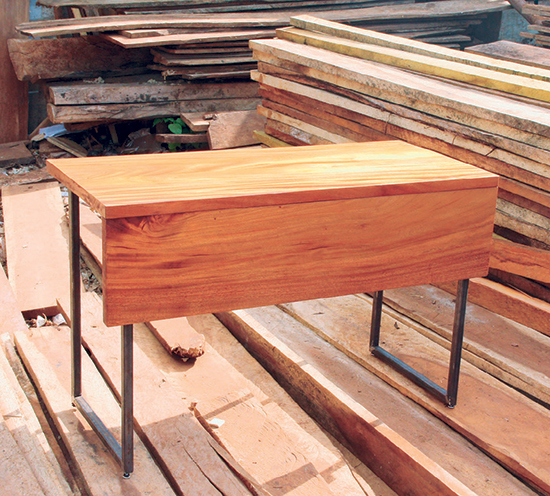
This woodworker is trying to rip African mahogany (1 1/2″) and the board is bowing as he cuts, binding on the blade and causing burning. What’s up here and can he prevent this?
Ellis Walentine: When wood binds on the blade during ripping operations, it is because it has picked up moisture in the outer cell layers but remains drier on the inside. The only way to relieve this “case hardening” stress is by allowing the wood to return to equilibrium moisture content through-and-through. You can hasten this process by stickering the case-hardened lumber in a warm dry place for a period of days or weeks depending on the thickness and degree of moisture penetration. A moisture meter is handy for checking the MC (moisture content) at different depths in the wood.
Rob Johnstone: The reason the wood is behaving badly is due to the release of internal tensions (caused by a troubled saplinghood, no doubt). The grain of the plank is reasonably balanced in the larger piece that the woodworker is cutting, but once that piece is divided … tension that was once counter balanced by reciprocal grain influence is released (thus causing the wood to spring apart or in technical terms … go cablooey). Try using this particular piece of wood in shorter sections.
Ian Kirby: Sounds like the board is case hardened because of lousy kiln drying. It also sounds like the saw has no splitter if the wood is touching the back edge of the blade and burning. And I wonder if the fence is set in the right position for ripply solid wood?
There is nothing you can do to prevent distortions when ripping due to case hardening. If he isn’t quite sure how to set up the machine, he should read the book, “The Accurate Table Saw,” by you know who.





